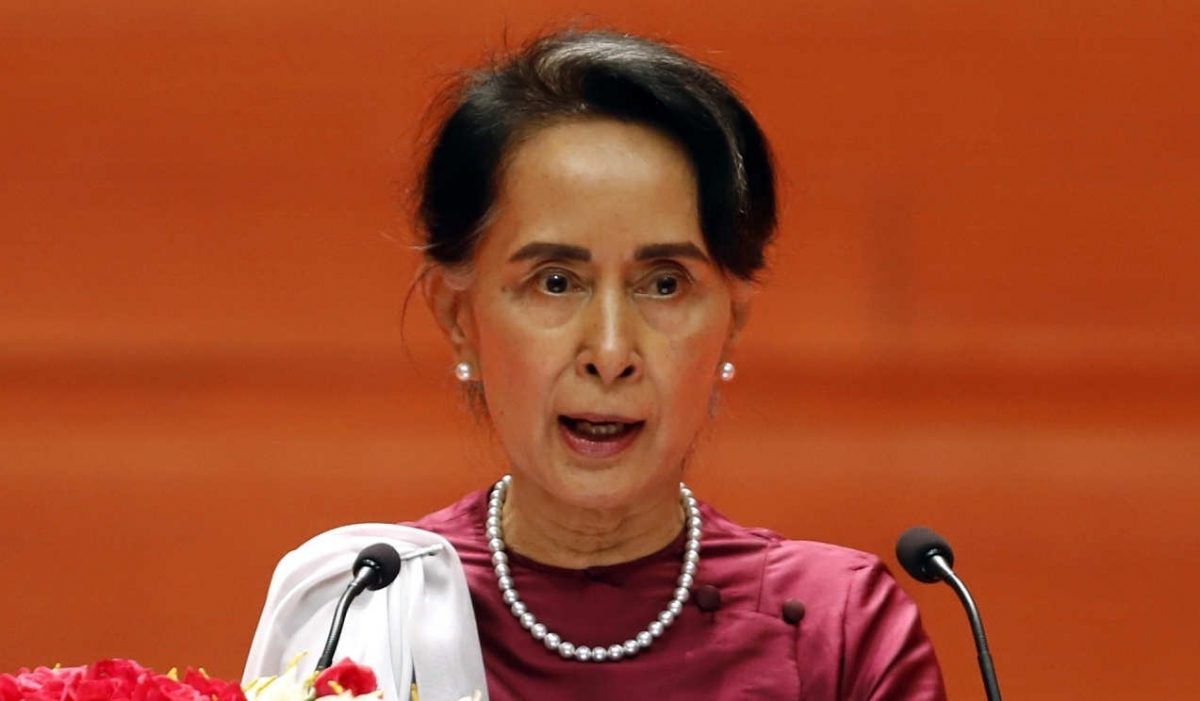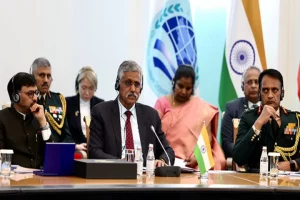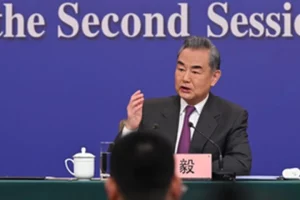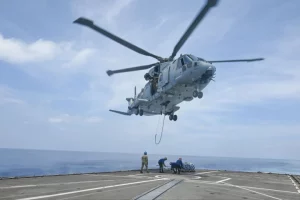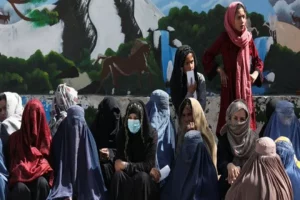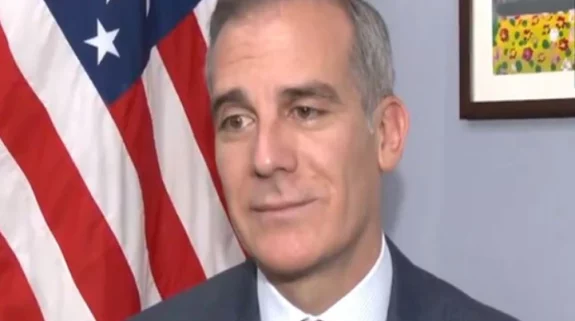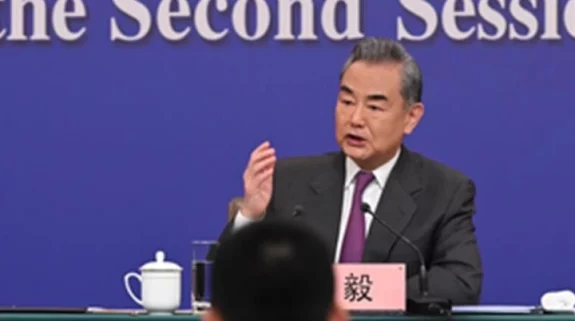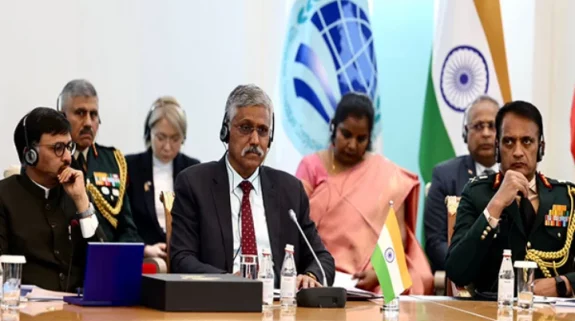Sudha Ramachandran
Chinese Foreign Minister Wang Yi’s recent visit to Myanmar saw the two governments signing agreements to boost economic, trade and technical cooperation. China also promised to provide Myanmar with 300,000 doses of Covid-19 vaccine.
A day before Wang’s visit, the two countries signed a memorandum of understanding (MoU) to conduct a feasibility study on a 650-km railway project to link Mandalay in central Myanmar with Kyaukphyu, a Bay of Bengal port in Myanmar’s Rakhine state.
On the face of it, Sino-Myanmar co-operation is deepening. High level visits culminating in deals are continuing; the recent visit to Naypyitaw, for instance, was Wang’s fifth since 2015 when the National League for Democracy came to power.
However, there are signs that all may not be well between the two neighbours. The China-Myanmar Economic Corridor (CMEC), a key component of China’s Belt and Road Initiative (BRI), does not seem to be progressing as the Chinese would like it to.
CMEC is a connectivity corridor running from Kunming in China’s Yunnan province to Mandalay, where it forks southward to Yangon and westward to Kyaukphyu. It envisions not only a network of ports, roads, railways linking the two countries but also, construction of ports as well as industrial parks and commercial zones.
The 1,700 km-long transport corridor provides China with overland access to the Indian Ocean. It reduces the distance, time and cost of China’s trading with Africa and West Asia and will allow it to bypass the Straits of Malacca. CMEC is also expected to boost landlocked Yunnan’s economy.
Consequently, China has been keen on swift implementation of CMEC projects.
However, projects are running slow and Myanmar’s enthusiasm over CMEC appears to be waning. Of the 38 projects that China has proposed under CMEC, Myanmar has approved only nine so far. The Chinese are worried. Chinese leaders and officials, including President Xi Jinping, have visited Myanmar over the past couple of years to get Myanmar to reaffirm commitment to CMEC. An important item on Wang’s agenda during his recent visit was to get Myanmar to expedite project implementation.
Myanmar too is interested in benefiting from BRI. Especially with the promised investment from western countries not materializing, its dependence on China remains strong and CMEC provides it with access for funds to develop its crumbling infrastructure.
So why is Myanmar dragging its feet on CMEC projects? An important reason is apprehension over excessive dependence on China.
Already Myanmar is heavily indebted to Beijing; around 40 per cent of its total foreign debt of $10 billion is owed to China. Myanmar is keen to avoid going Sri Lanka’s way i.e. it would like to avoid falling into a Chinese ‘debt trap.’ It is therefore being more careful in signing on to the Chinese-proposed projects, preferring to accept only those projects or project components that will benefit Myanmar.
The $10 billion Kyaukphyu project, for instance, includes a port that costs $7.3 billion and a special economic zone pegged at $2.7 billion. The port is unlikely to benefit Myanmar much. There are doubts over the economic viability of the SEZ at Kyaukphyu as it is poorly connected to other commercial centres in Myanmar. Hence officials have been negotiating with the Chinese to downsize the project and cut costs.
Decision-making in Myanmar has always been slow due to bureaucratic red tape. Wariness over CMEC project costs and returns to Myanmar have further delayed evaluation and implementation of projects.
Importantly, the Myanmar government is having to deal with strong opposition to projects from its people. Local lives and livelihoods are likely to be adversely affected by the infrastructure projects and people are angry that they have not been consulted. There is the question of environmental degradation too that is of concern to local communities and activists.
Much opacity shrouds project terms adding to unease over Chinese intentions. There have been several mass protests against CMEC projects and this could prove particularly troublesome in ethnic states that are roiled in conflicts. People in the Kachin and Shan states, for instance, have long protested against not just their oppression and exclusion by the Myanmar state but the exploitation of their natural resources by the Chinese. CMEC projects, several of which are located in these states, are seen as yet more collusion between the two.
The Muse-Mandalay railway project, which costs an estimated $9 billion runs Shan state. Local communities are opposing the project and have complained that they were not consulted for the project’s Environment Impact Assessment (EIA) study. Will the railway project provide fuel to an already raging armed conflict in the Shan state and provide Shan rebels with new targets to hit?
Relations between Myanmar’s powerful military and the Chinese is deteriorating too. Although the Tatmadaw strongly co-operated with the Chinese for decades, it has always been suspicious of Chinese intentions especially on account of China’s support to ethnic armies like the Wa State Army. It has now accused China of providing weapons to the Arakan Army and the Arakan Rohingya Salvation Army, which it is fighting in the Rakhine state. More recently, China’s construction of a fence along its border with Myanmar has drawn the Tatmadaw’s ire as well.
Fraying relations between Myanmar and China, especially over CMEC opens up space for other countries to play a larger role in Myanmar’s economy.
Myanmar is keen on India stepping up its economic role in the country especially as a counter to China. However, India has failed to rise to the occasion. Not only does it lack the financial resources to undertake the kind of massive projects the Chinese execute in Myanmar but also, its infrastructure projects have not been completed on time. This has made India an unattractive infrastructure partner abroad.
India could overcome these challenges by teaming up with the Japanese in bidding for and executing projects. Their shared strategic and security concerns would make such a partnership mutually beneficial.
(Dr Sudha Ramachandran is a political and security analyst based in Bengaluru. Her articles on Asian security issues appear in The Diplomat, China Brief and Militant Leadership Monitor. She can be contacted at Sudha.ramachandran@live.in)






